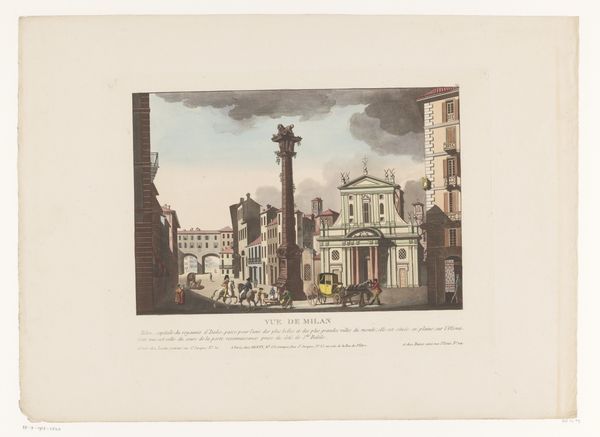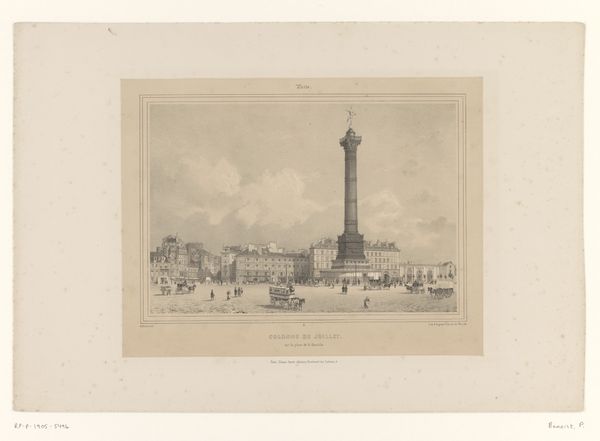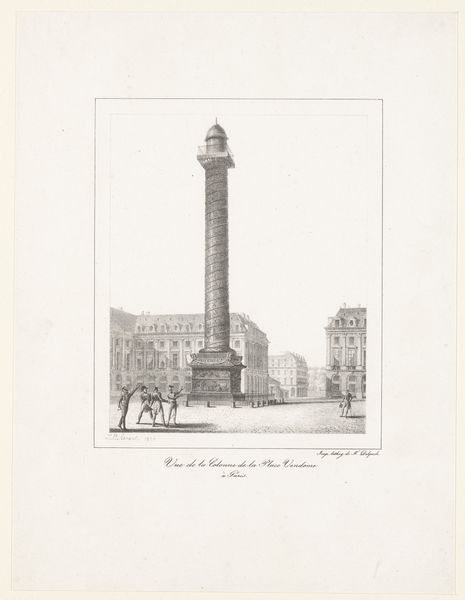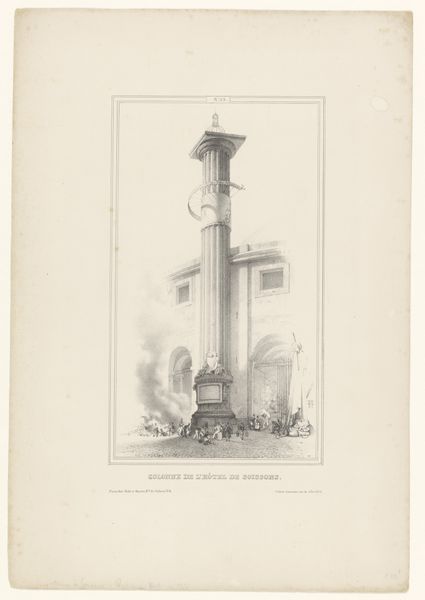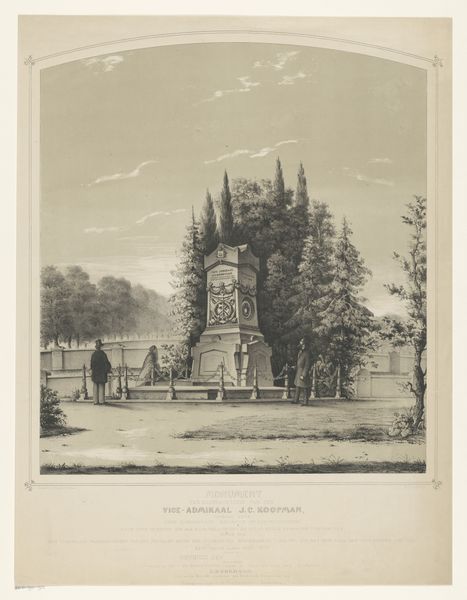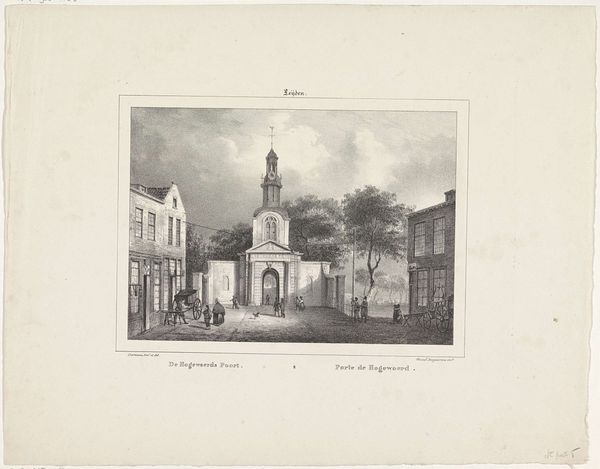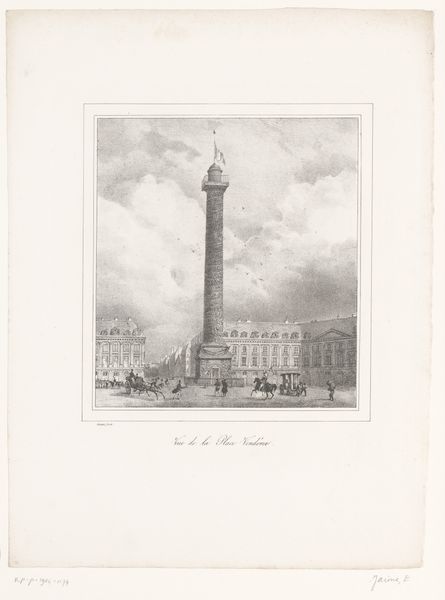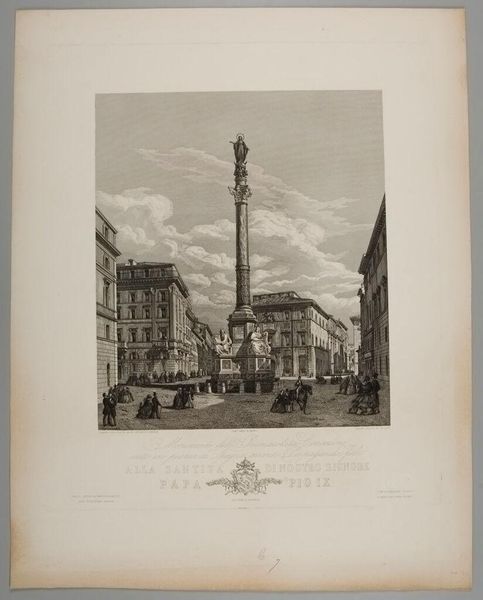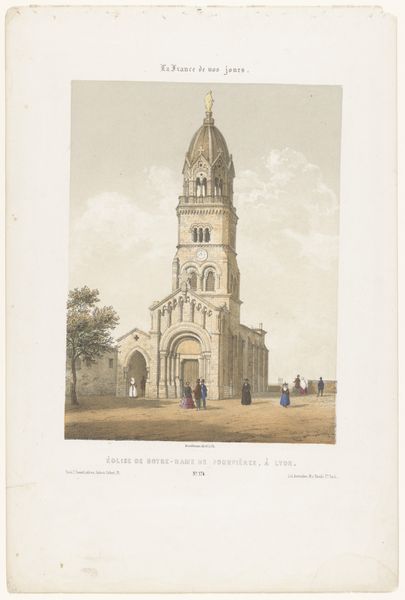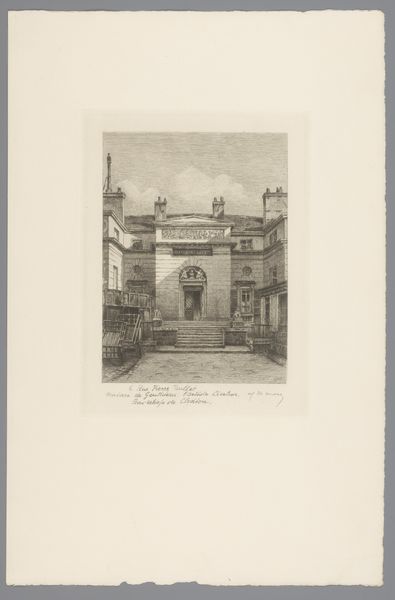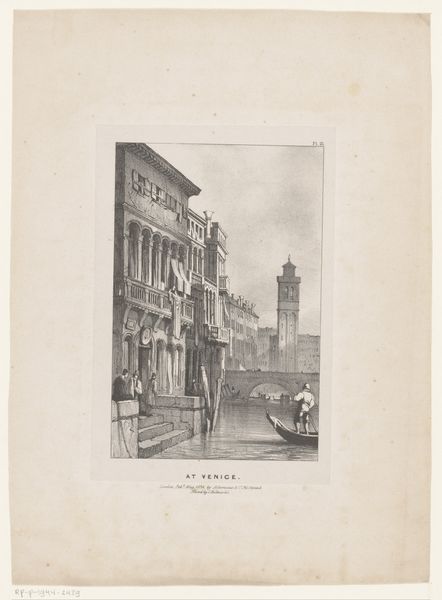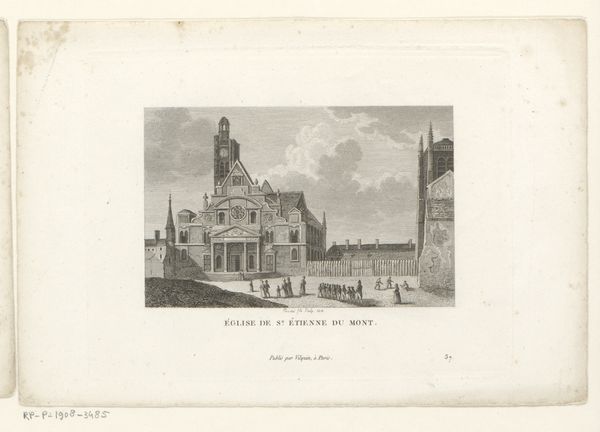
Column of Trajan, plate twenty-one from Ruins of Rome Possibly 1798
0:00
0:00
drawing, print, etching, paper, engraving
#
drawing
#
neoclacissism
# print
#
etching
#
landscape
#
paper
#
cityscape
#
history-painting
#
engraving
Dimensions: 448 × 330 mm (sheet)
Copyright: Public Domain
M. Dubourg created this print, "Column of Trajan, plate twenty-one from Ruins of Rome," sometime between 1786 and 1838. It captures the grandeur of ancient Rome. It was a time when European artists and intellectuals were rediscovering and reinterpreting classical antiquity. The column itself is a monument to power, erected to commemorate Emperor Trajan's military victories in Dacia, now modern Romania. But, it’s not just a celebration of Roman might. It's also a narrative scroll, carved in stone, depicting scenes of battle and conquest. These carvings offer insights into the lives of soldiers, engineers, and the conquered Dacian people, revealing the human cost of empire. Dubourg's print invites us to reflect on the legacies of colonialism, the stories we tell about ourselves, and the power structures that shape our understanding of history. What does it mean to memorialize conquest, and whose voices are left out of the narrative?
Comments
No comments
Be the first to comment and join the conversation on the ultimate creative platform.
